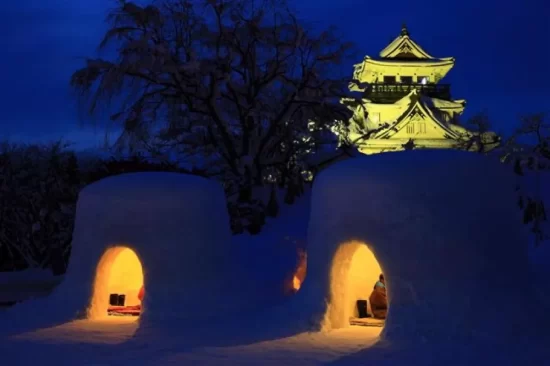
Winter in Japan is a fantastic time to visit. Many parts of the country are blanketed in thick snow which can lead to many cosy evenings feasting on winter delicacies. Skiers flock to the mountains for some of the world’s best powder runs, the northern prefectures host a number of snow festivals, and it’s the best season to spot the rare red-crowned cranes in their natural habitat. Wrap up warm and join us to explore the wonders of winter in Japan.
Encountering the elegant red-crowned cranes
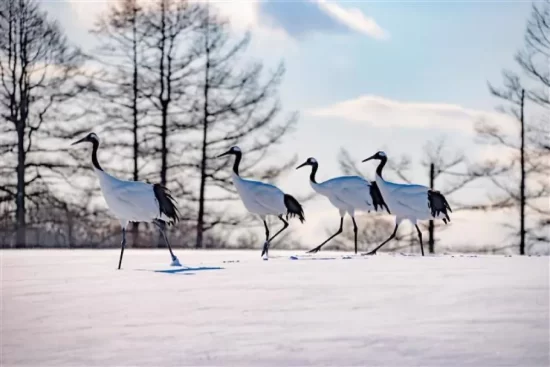
In the snowy north of Japan, in the eastern part of the island of Hokkaido, the Kushiro Marsh is one of the best places in the world to witness flocks of red-crowned cranes. An area that spreads 183 square kilometres, it’s Japan’s largest marshland, home to 600 species of plants as well as foxes, eagles and salamanders. But the rare cranes are the main draw to the area, with birdwatchers from all over the world heading here to witness this elegant avian species – it’s the only place on the planet where they are resident year-round. Designated a special national natural treasure, the crane symbolizes happiness, longevity and fidelity, with red-crowned cranes mating for life. The birds have featured in Japanese artistic works throughout the centuries, and today the crane is instantly recognizable as the logo of Japan Airlines.
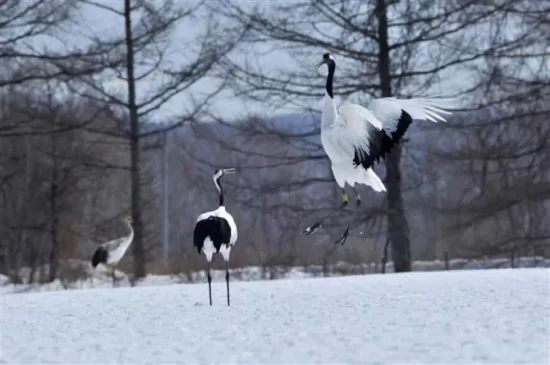
Although the cranes are considered to be endangered, their numbers have risen in recent years. In the 1920s there were only ten pairs; today that number has risen to over 1,000. In winter, the cranes flock together in large numbers. Head to one of the feeding sites such as Tsurui-Ito Tancho Sanctuary, and you’re pretty much guaranteed to witness these elegant creatures in their natural habitat.
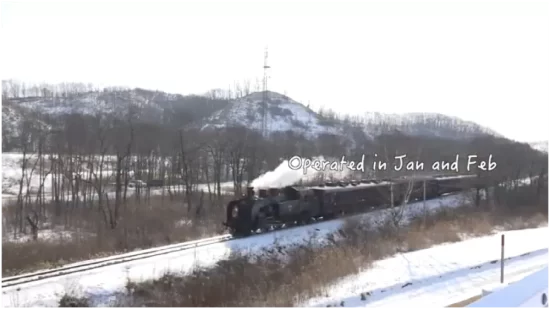
Pro Tip – One of the best ways to see the marshes in the winter months is on board Hokkaido Railway Company’s SL Fuyu-no-Shitsugen train. Operating in January and February, the train runs through the Kushiro Marsh, and there’s a fair chance of seeing the cranes, as well as Ezo deer, from the window.
A journey to Toyama’s Snow Country
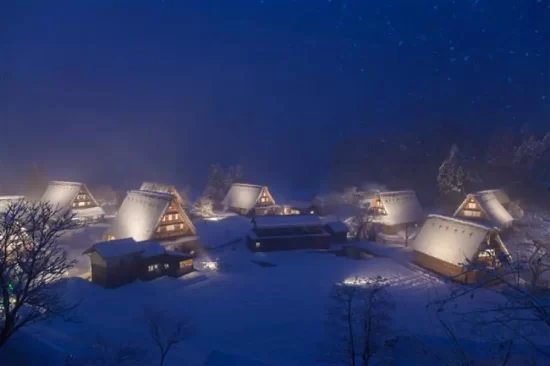
Deep in rural Toyama prefecture lies Gokayama and its villages of Suganuma and Ainokura, granted UNESCO World Heritage status in 1995 for their gasshō-zukuri houses. Famous for their steeply pitched thatched roofs that prevent snow build-up in winter and provide warmth against the elements, the buildings get their name from the sharp angles that look like hands in prayer. Some of the houses date back 400 years, testament to the hardiness of their construction. Suganuma’s collection of gasshō-zukuri sit in a scenic riverside spot, but to experience a night under one of these unique roofs, head to Ainokura where a number of houses offer traditional accommodation to visitors with futons on tatami floors and dining around a hearth, in an idyllic location surrounded by the mountains.
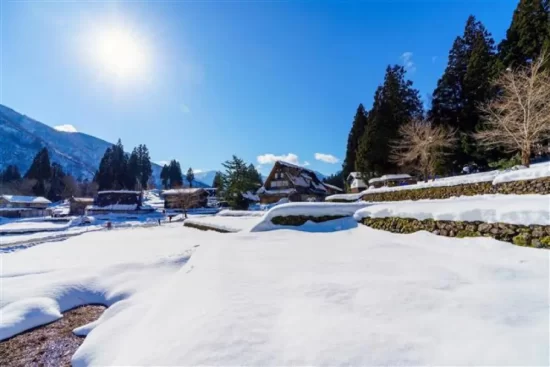
Yusuke, in the village of Ainokura, dates back more than 150 years, and accommodates only one group per night for a private stay in this historical monument. Or go even further back in time at Syoshichi, a 200-year-old gasshō-zukuri, where dinner includes fresh local fish, vegetables from the mountains, and pickles made from vegetables grown in the landlady’s garden
A tradition of building igloos that dates back 450 years
In Akita prefecture, in the northern region of Tohoku, there’s a tradition dating back 450 years that’s as popular today as it has been at any point throughout the centuries. The Yokote Snow Festival sees the creation of more than 80 kamakura igloos, and hundreds of miniature kamakura that are lit from inside by candles, creating a mesmerizing scene.
Inside each of the larger igloos is an altar where offerings are placed to honour the gods of water, a festival that takes place on February 15 and 16 each year. It’s possible to squeeze into the igloos to share rice cakes with Akita locals, and feel just how cosy these snowy spaces can be.
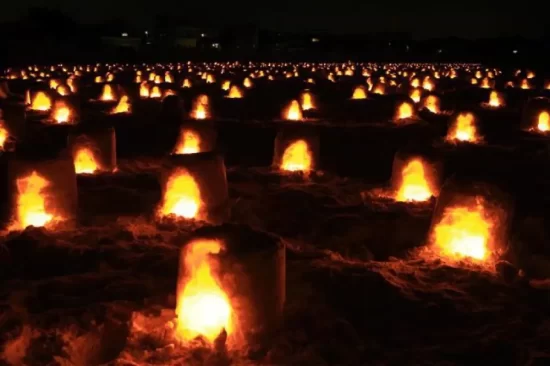
Wrap up warm and wear snow boots to walk through the town’s many venues where you’ll find illuminated kamakura, including alongside old samurai residences. The route concludes at the Yokote Castle, founded in 1550 and built in its current form in 1965, looking particularly beautiful covered in snow and lit up against the night sky.
Pro Tip – While you’re in the area, head to the Akita Museum of Art in Akita City, designed by renowned Japanese architect Tadao Ando and housing an exceptional collection of 20th century paintings by flamboyant artist Léonard Tsuguharu Foujita.
Luxury on the slopes at the ski-in, ski-out Park Hyatt Niseko 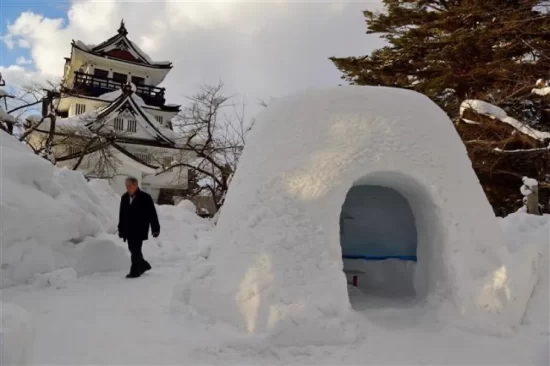
Niseko has long been on the must-ski list of winter sports enthusiasts around the world. Known for its exceptional powder snow, varied trails, challenging tree lines and cosy village offering plenty of après-ski options, it’s also one of Japan’s most foreigner-friendly ski resorts, with English spoken widely. The Park Hyatt Niseko Hanazono is the ultimate ski-in, ski-out luxury lodging with spectacular views of Mount Yotei, often called the Mount Fuji of Hokkaido.
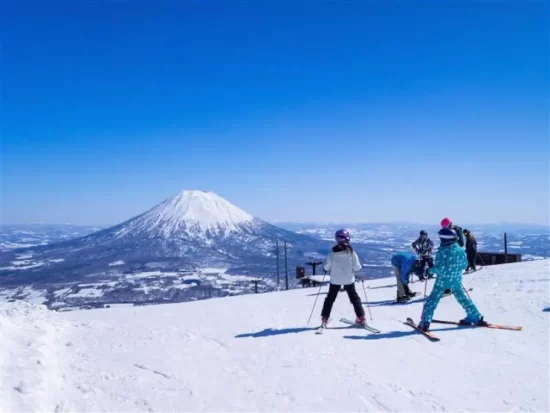
After a day working up an appetite on the slopes, the hotel’s diverse dining options will satisfy any hunger. From a journey through China’s rich culinary heritage at China Kitchen, to the best Hokkaido ingredients from land and sea prepared with a French touch at Molière Montagne and exceptional sushi from a Michelin-starred chef, the Park Hyatt is elevating Hanazono’s dining scene.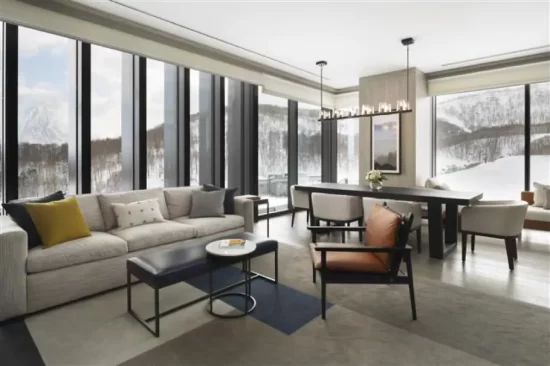
And at the end of the day, aside from incredible snow, there’s one more thing Japan offers skiers that other places don’t – a soak in a natural onsen hot spring bath. The Spa at Park Hyatt offers separate baths for men and women, filled with mineral-rich waters from Mt Annupuri. Perfect for soothing those tired muscles after a day of skiing.




















